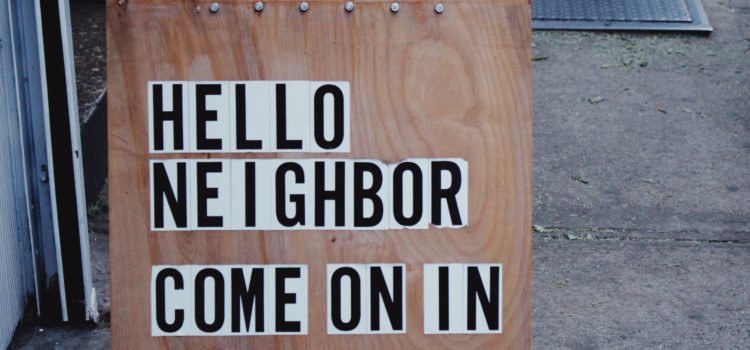

This article is an excerpt from the Shortform summary of "Influence" by Robert B. Cialdini. Shortform has the world's best summaries of books you should be reading.
Like this article? Sign up for a free trial here .
Have you ever found it hard to say “no” to someone you like? What if a friend or neighbor tries to sell you something? It might feel easier to just buy it than to feel uncomfortable after rejecting them. How does the liking bias influence the way you make decisions?
Robert Cialdini’s Liking Principle of persuasion is a theory stating that people are more likely to grant requests from people they know and like. It also states that you’re more likely to grant requests from people you perceive to be good-looking or to like you. We’ll cover the basics of the liking bias and some situations where you might find it particularly influential.
What Is the Liking Principle?
The Liking Principle of persuasion is a theory that stipulates that, when you know and like someone, it becomes more difficult to deny their requests. Thus, we are more amenable to the compliance efforts of neighbors, friends, and family, or from people who claim to know them. We have a liking bias and are also more willing to acquiesce to people who we see as being good-looking, affable, or who profess to like us.
As you’ve probably guessed, however, the principle of liking creates a wide opening for compliance practitioners who wish to exploit the liking bias for personal gain. According to Cialdini, liking helps make sales. If they can get us to like them, we’re much more likely to be putty in their hands. If you like the seller, you’ll like what she’s selling.
(Shortform note: The principle of liking makes sense, from an evolutionary and group cohesion perspective, why we would be more willing to comply with the wishes of people we know. Early human communities were extended kinship groups, where the survival of the individual was closely tied to the larger familial group. In this world of localized, tight-knit communities, helping people in your in-group was a valuable survival trait: you relied on them to help with the necessities of life, like food-gathering and child-rearing. The members of your kin group would also have probably been the only people you actually encountered. Thus, there evolved a strong propensity to assist individuals who were personally known to us.)
Familiarity Breeds Compliance
We are far more likely to comply with requests from people we know. The social costs of saying “no” to a neighbor or acquaintance are much higher than they are for a stranger.
Compliance professionals harp on this liking bias and use our natural empathy for our friends, acquaintances, and neighbors against us. This explains, for example, why charitable organizations recruit volunteers to go door-to-door in the neighborhoods where they live.
People are less willing to slam the door in someone’s face if the canvasser starts their pitch with, “Hello, I live in this neighborhood…”
Similarity
Going further with Cialdini’s Liking Principle of persuasion, we also see that people are more willing to cooperate with requests from people they see as being similar to themselves. We explored some of this when we talked about social proof, but similarity also works on a one-on-one level with the liking bias.
The source of similarity can be anything from religion, ethnic background, personality traits, shared preferences, or physical appearance and style of dress. We are evolved to form a bond with people as soon as we can identify some common ground with them. The Liking Principle of persuasion applies with many commonalities.
In one 1970s experiment, researchers assessed how the style of dress of a petition-carrier at an anti-war rally affected people’s willingness to sign it. People were more willing to sign the petition of a requester who was dressed like themselves.
They often did so without bothering to read the petition itself: similarity alone did all the work for the requester. The principle of liking was at work here.
School Desegregation: An Exception
Familiarity does not always trigger the principle of liking and compliance. In the wrong circumstances, it can lead to contempt and viciousness. There is no liking bias at work here.
The mixed results of school desegregation in the United States speak further to this point. Unofficial, de facto segregation in schools remained widespread decades after the end of formal, legal segregation following the Supreme Court’s decision in Brown v. Board of Education in 1954. Children of different races rarely interacted on a social level even at schools with a high degree of diversity. Clearly, claims that increased exposure to children of different races would lead to racial harmony and inclusion were wrong.
The issue, however, was not desegregation itself. It was the circumstances under which it was being done. School is a highly competitive environment. Children are jostling with one another for the approval of peers, teachers, and administrators. Desegregation was always going to be in trouble in such an environment. Children saw peers outside their own racial group as potential competitors for these scarce resources and the liking bias did not extend to children of other races. Just throwing children of all different racial groups together was a recipe for conflict.
The solution was to bring the children together in a multi-racial group project, where each individual could only succeed if the group succeeded. Research done by Elliot Aronson in the 1970s demonstrated the potential of cooperative learning techniques to break down social and racial barriers in the classroom.
The “jigsaw puzzle” classroom is a twist on this. Class activity is centered around answering questions that have multi-part answers. Each child in a group is responsible for giving one part of a multi-part answer. Thus, the children have an incentive to help each other succeed: they all fail if one of them fails.

———End of Preview———
Like what you just read? Read the rest of the world's best summary of Robert B. Cialdini's "Influence" at Shortform .
Here's what you'll find in our full Influence summary :
- How professional manipulators use your psychology against you
- The six key biases you need to be aware of
- How learning your own biases will help you beat the con men around you






